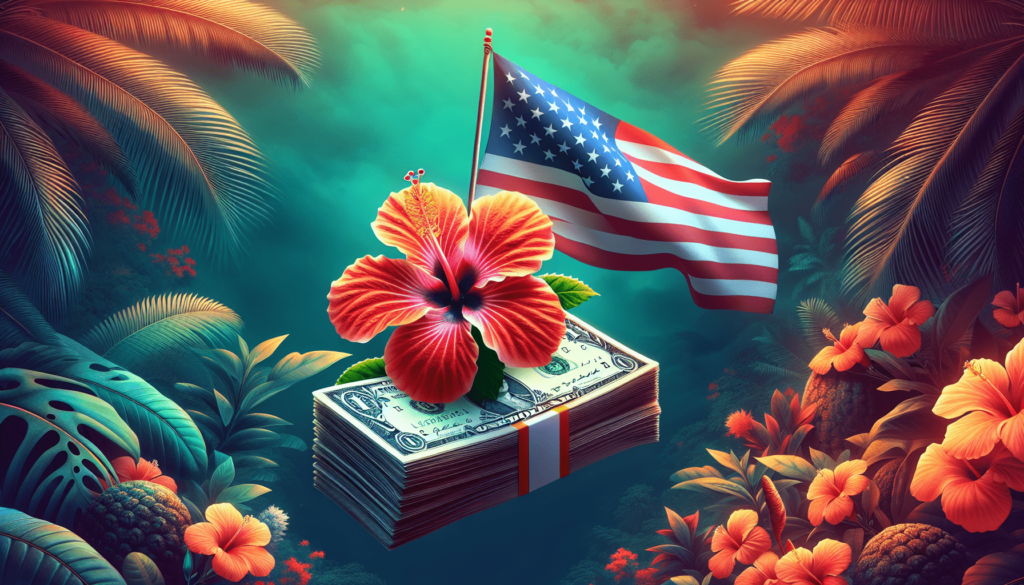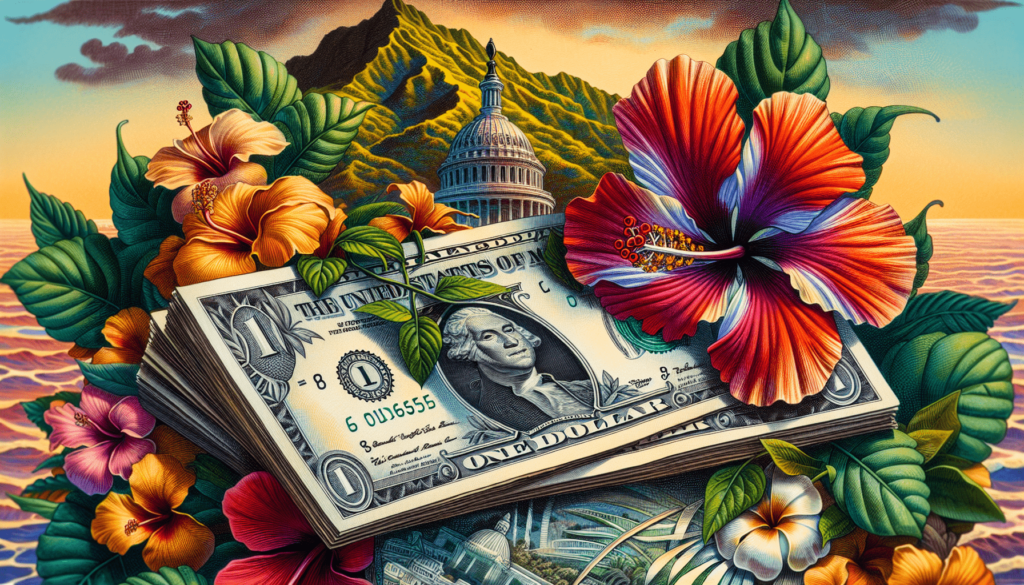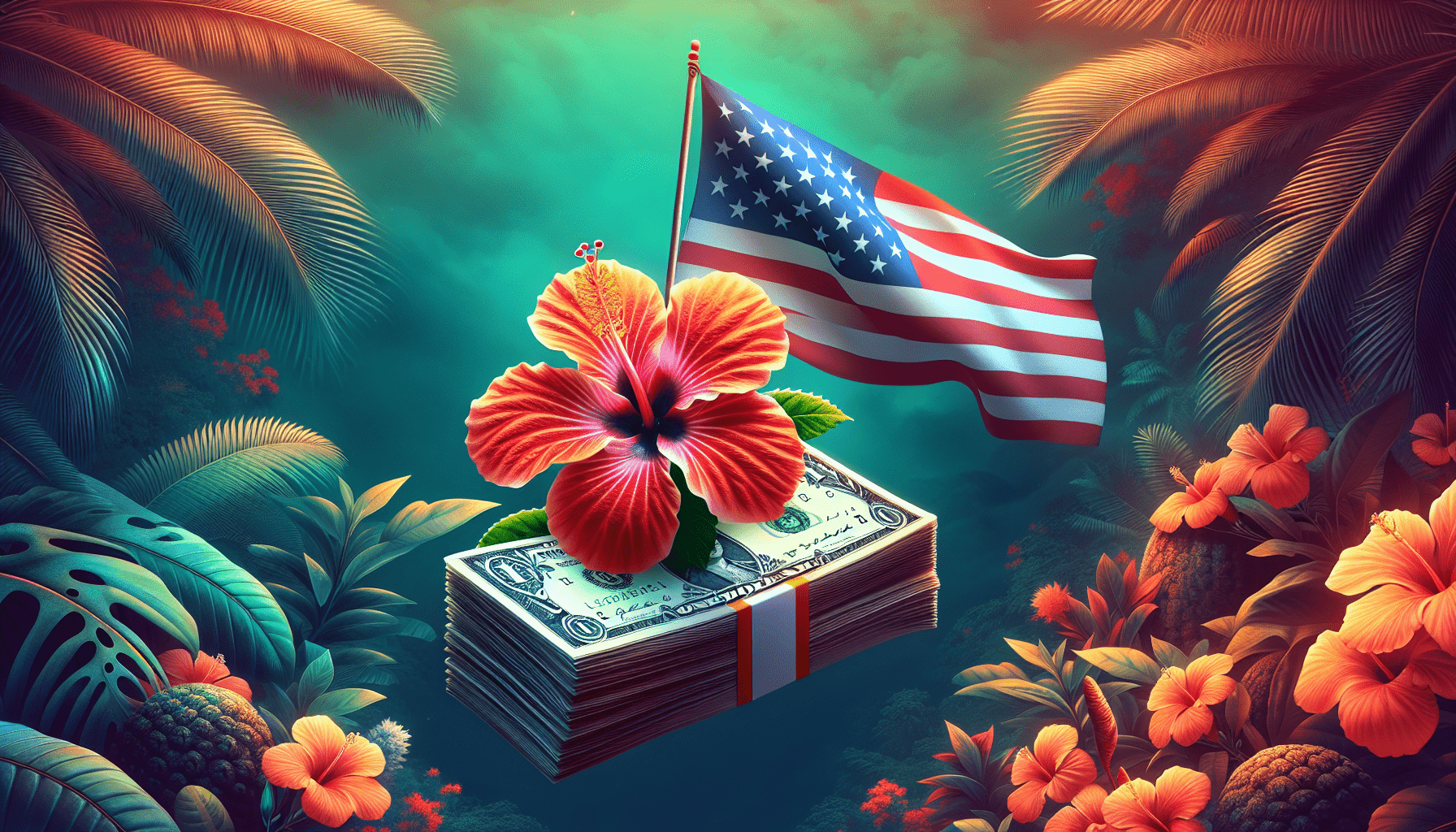When planning a trip to Hawaii, it’s important to know what currency is widely accepted on the islands. Fortunately, when you visit this tropical paradise, you won’t have to worry about exchanging your money. That’s right—the United States Dollar (USD) is the currency used in Hawaii. So, whether you’re strolling along the iconic Waikiki Beach or exploring the breathtaking landscapes of Maui, you can rest assured that your dollars will be readily accepted. No need to fret about currency conversions or hunting for ATMs; in Hawaii, USD is the name of the game.
Currency used in Hawaii
US Dollar (USD)
In Hawaii, the official and primary currency used is the United States Dollar (USD). As Hawaii is a part of the United States, it follows the same currency system as the mainland. The USD is widely accepted and utilized throughout the Hawaiian islands, making it convenient for both residents and visitors.
History of currency in Hawaii
Introduction of USD
The introduction of the USD as the currency in Hawaii can be traced back to the late 19th century. Following the annexation of Hawaii by the United States in 1898, the USD gradually replaced the previously used currency in the region. This transition was part of the larger effort to establish a unified monetary system within the newly acquired territories.
Previous currencies used
Before the USD gained prominence, various currencies were used in Hawaii, reflecting the complex history of the islands. In the early 19th century, when Hawaii was a sovereign kingdom, the currency consisted of coins known as “Hawaiian dollars” and “Hapalua” (half dollar). These coins were made of both silver and gold and bore the likeness of Hawaiian monarchs. However, with the establishment of American influence and the transition to becoming a U.S. territory, the USD gradually replaced the native currencies.

Current status of USD in Hawaii
Sole legal tender
The USD is recognized as the sole legal tender in Hawaii. This means that all transactions, whether it be buying goods, services, or paying taxes, must be conducted in USD. Regardless of whether you are a resident or a visitor to the islands, you will find that USD is widely accepted in businesses, hotels, restaurants, and other establishments across Hawaii.
Accepted everywhere
One of the key advantages of using USD in Hawaii is its widespread acceptance. From the bustling streets of Honolulu to the tranquil beaches of Maui, you will find that establishments in all major tourist areas readily accept USD. This includes not only large businesses and institutions but also small local shops and vendors. Therefore, you can enjoy peace of mind knowing that your USD will be readily accepted wherever you go in Hawaii.
Currency exchange in Hawaii
Exchange rates
When it comes to currency exchange in Hawaii, it is essential to consider the prevailing exchange rates. These rates fluctuate daily based on various economic factors, such as global market conditions and the strength of the US economy. It is advisable to check the current exchange rates before exchanging your currency to ensure you get the most favorable rate. Many online platforms and financial institutions provide real-time exchange rate information to assist with this process.
Currency exchange services
In Hawaii, you will find an array of currency exchange services available to assist you in converting your foreign currency to USD. These services can be found at major airports, banks, and dedicated currency exchange centers. It is important to compare the exchange rates and any associated fees or commissions charged by different providers to ensure you are getting the best value for your money. Additionally, some hotels and resorts also offer currency exchange services, although they may not always provide the most competitive rates.

Payment methods in Hawaii
Cash
Cash is widely accepted in Hawaii, and it is always a good idea to carry some USD with you. Whether you are grabbing a quick bite from a food truck, purchasing souvenirs, or tipping your tour guide, having cash on hand can be convenient. Smaller denominations, such as $1, $5, and $10 bills, are particularly useful for everyday transactions. Some smaller establishments or street vendors may only accept cash, so it is always prudent to have cash readily available.
Credit/debit cards
Credit and debit cards are widely accepted in Hawaii. Major credit card companies such as Visa, Mastercard, American Express, and Discover are accepted in most establishments, including hotels, restaurants, and retail stores. Using a card for larger purchases or dining at upscale restaurants can be more convenient and provide added security. However, it is always advisable to inform your bank or credit card company of your travel plans to avoid any unexpected card freezes or issues.
Mobile payment apps
Mobile payment apps, such as Apple Pay, Google Pay, and Samsung Pay, are also gaining popularity in Hawaii. These apps allow you to link your credit or debit card to your smartphone or smartwatch, enabling you to make payments by simply tapping your device at a compatible payment terminal. Many establishments, including supermarkets, convenience stores, and even some local vendors, offer the option to pay using these mobile payment apps.
ATMs in Hawaii
Availability and accessibility
ATMs (Automated Teller Machines) are readily available throughout Hawaii, particularly in popular tourist areas and urban centers. Banks, credit unions, and independent ATM networks operate a vast network of ATMs, ensuring easy accessibility for locals and visitors alike. You will find ATMs at major shopping centers, hotels, airports, and even some convenience stores. However, it is always advisable to carry some cash with you as a backup, particularly if you plan to explore more remote areas where ATM availability may be limited.
Withdrawal limits
When using ATMs in Hawaii, it is important to consider any withdrawal limits that may apply. While each bank and financial institution may have different policies, common withdrawal limits range from $200 to $1,000 per day. This limit is put in place for security purposes and to prevent potential misuse of cards. If you anticipate needing larger amounts of cash, it may be beneficial to plan accordingly or contact your bank to discuss temporary withdrawal limit increases.
Tips for handling USD in Hawaii
Keeping small denominations
To make transactions more convenient, it is recommended to carry a mix of small and larger denominations of USD. Small bills, such as $1, $5, and $10, are particularly useful for day-to-day expenses, including tips, food vendors, or souvenir purchases. Having smaller denominations canhelp streamline transactions and simplify the process for both you and the vendors, especially in crowded areas or during peak tourist seasons.
Beware of counterfeit notes
While instances of counterfeit currency are relatively rare in Hawaii, it is always advisable to remain vigilant. To protect yourself from potential counterfeit notes, familiarize yourself with the security features of USD bills. These features include watermarks, security threads, and color-shifting inks. By examining the physical characteristics of the bills and being mindful of any suspicious behavior, you can ensure the authenticity of the notes you receive.
Currency conversion considerations
Exchange fees
When converting your currency to USD, it is important to consider any potential exchange fees that may apply. Banks, financial institutions, and currency exchange services may charge a fee or commission for converting your money. The fees can vary significantly, so it is advisable to compare rates and find the most cost-effective option. Additionally, some establishments may offer currency conversion services at a higher rate than normal, so be cautious and choose wisely to get the best value for your money.
Comparison of rates
To ensure you are getting the most favorable exchange rate, it is recommended to compare rates offered by different currency exchange providers. Online platforms, banks, and exchange offices often provide real-time exchange rate information, allowing you to make informed decisions. It is important to note that rates can fluctuate throughout the day, so keeping an eye on the rates and timing your currency exchange accordingly can potentially save you money in the long run.
US coins and their usage in Hawaii
Denominations
In addition to paper currency, US coins are also used in Hawaii for smaller transactions. The denominations of US coins include the penny ($0.01), nickel ($0.05), dime ($0.10), quarter ($0.25), and half-dollar ($0.50). While the half-dollar coin is not as widely used, the other denominations are commonly encountered in day-to-day transactions.
Commonly used coins
In Hawaii, you will find that coins are frequently utilized for various purposes. Vending machines, public transportation, parking meters, and even tipping at certain establishments often require the use of coins. Having a supply of coins on hand, particularly quarters, can be convenient as you navigate daily activities and make small purchases.
Conclusion
In conclusion, the United States Dollar (USD) is the primary currency used in Hawaii. It has a long history dating back to the annexation of Hawaii by the United States in the late 19th century. USD is widely accepted throughout the islands and is the sole legal tender. When visiting Hawaii, it is advisable to carry a mix of cash, credit/debit cards, and utilize mobile payment apps when possible. Understanding currency conversion considerations, such as exchange rates and potential fees, can help maximize the value of your money. With a basic understanding of the currency used in Hawaii, you can navigate the islands’ financial landscape with ease and enjoy your time in this beautiful tropical paradise.
